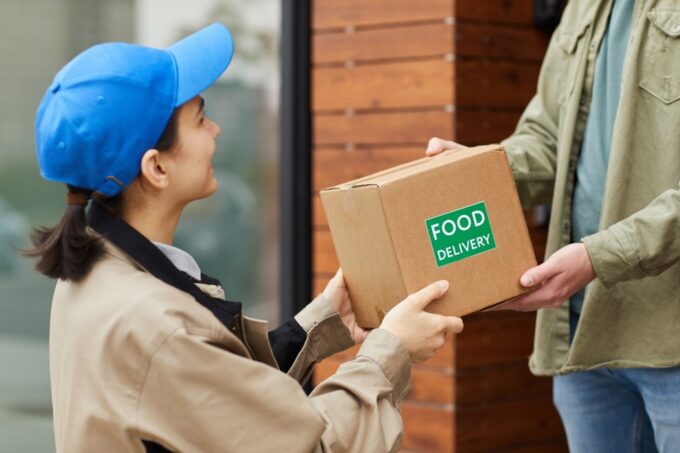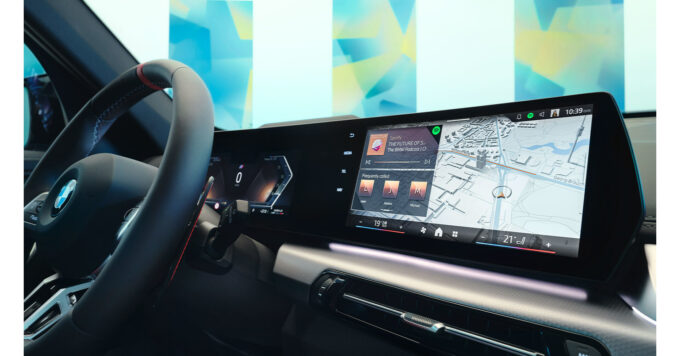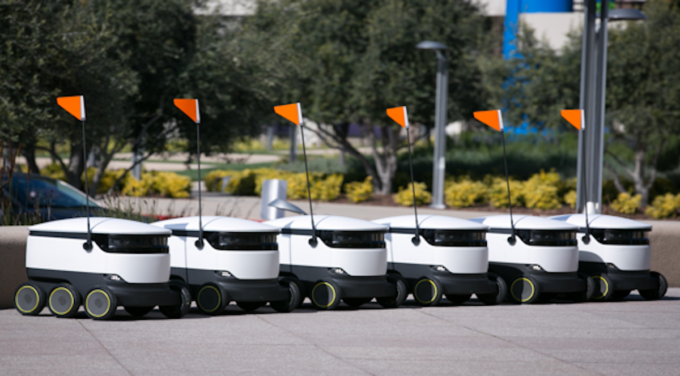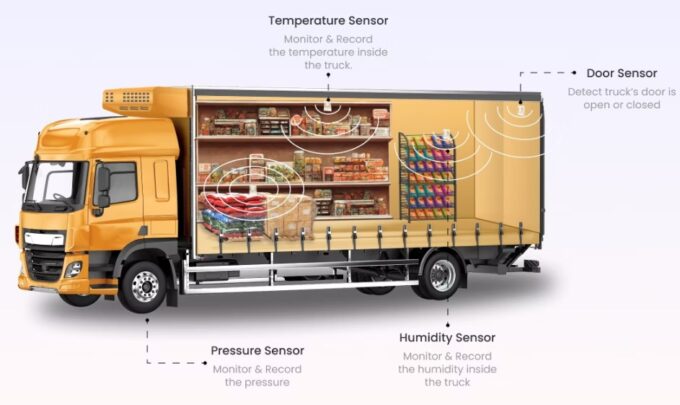
The food delivery industry has experienced an unprecedented surge in growth over the past decade. From humble beginnings as a niche service, it has evolved into a multi-billion-dollar industry, integral to modern life.
This boom has been fueled by technological advancements, changing consumer preferences, and the rise of the gig economy. However, at the heart of this dynamic industry are the delivery drivers who ensure that hot meals reach our doorsteps efficiently and reliably. These drivers play a crucial role in maintaining the quality and timeliness of the service, making them indispensable to the success of food delivery platforms.
As the industry continues to expand, the challenges faced by delivery drivers have become more apparent. Long hours, safety concerns, and inconsistent earnings are just a few of the issues that can affect their performance and job satisfaction.
To address these challenges, companies have begun to innovate with a focus on the drivers themselves. These driver-centric innovations are not only enhancing the delivery experience for customers but are also transforming the working conditions for drivers, making their roles more sustainable and rewarding.
In this blog post, we will explore the rise of driver-centric innovations in the food delivery industry. We will examine the evolution of the industry, the challenges faced by drivers, and the technological advancements that are supporting them.
Through this comprehensive exploration, we aim to provide a thorough understanding of how the food delivery industry is evolving to better support its most vital workforce.
Evolution of the Food Delivery Industry

Source: mplusgroup.eu
Historical Perspective
The concept of food delivery is not a modern phenomenon; it dates back to the 19th century. One of the earliest recorded instances of food delivery was in 1889, when King Umberto I and Queen Margherita of Italy ordered the first pizza delivery from Pizzeria di Pietro e Basta Cosi in Naples. This humble beginning marked the start of a service that would grow exponentially in the following centuries.
The mid-20th century saw the rise of telephone-based food delivery services, with Chinese and Italian takeout becoming popular in urban areas. The introduction of the telephone revolutionized food delivery, making it more accessible to a broader audience. Fast food chains like Domino’s Pizza, which was founded in 1960, capitalized on this trend by establishing efficient delivery models that became industry standards.
Technological advancements in the late 20th and early 21st centuries brought about significant changes. The internet and mobile technology gave birth to online food delivery platforms, starting with the launch of Just Eat in 2001 and Grubhub in 2004.
These platforms allowed customers to place orders online, revolutionizing the convenience and accessibility of food delivery. The development of smartphones and mobile apps further transformed the industry, enabling real-time tracking, seamless payments, and personalized recommendations.
Current State of the Industry
Today, the food delivery industry is a global behemoth, valued at over $150 billion in 2023. This rapid growth is driven by changing consumer lifestyles, increased internet penetration, and the convenience of on-demand services. According to a report by Statista, the online food delivery market is expected to continue its upward trajectory, reaching a market volume of $339 billion by 2027.
Several key players dominate the market, each contributing to the industry’s evolution in unique ways:
- UberEats ─ Leveraging its ride-hailing infrastructure, UberEats has become one of the largest food delivery services globally, operating in over 6,000 cities across 45 countries.
- DoorDash ─ Leading the market in the United States, DoorDash’s focus on customer experience and innovative partnerships has helped it capture a significant market share.
- Grubhub ─ One of the pioneers of online food delivery in the US, Grubhub continues to be a major player with its extensive restaurant network and loyalty programs.
- Deliveroo ─ Based in the UK, Deliveroo has expanded rapidly across Europe, Asia, and Australia, known for its high-quality service and focus on premium restaurant partnerships.
- Just Eat Takeaway ─ This European giant operates in multiple countries, offering a vast array of restaurant options and leveraging its large-scale logistics network.
These companies have not only expanded the reach of food delivery but also introduced numerous innovations that enhance the customer experience and streamline operations. From AI-driven logistics and predictive analytics to advanced mobile apps and personalized marketing, the modern food delivery industry is a testament to the power of technology and innovation.
Challenges Faced by Delivery Drivers

Source: georgetown.edu
Common Challenges
Delivery drivers are the backbone of the food delivery industry, but their work often comes with a host of challenges that can make their jobs difficult and less rewarding.
- Long Hours ─ Many delivery drivers work extended hours to earn a decent income, often exceeding standard full-time hours. This can lead to fatigue, stress, and a poor work-life balance, affecting their overall well-being and performance.
- Low Pay ─ Despite the demanding nature of the job, delivery drivers frequently face low pay rates. The compensation structure, typically based on a per-delivery fee plus tips, can result in inconsistent earnings. Factors like delivery volume, time of day, and customer tipping behavior heavily influence their income.
- Lack of Job Security ─ Most delivery drivers are classified as independent contractors rather than employees. This classification means they do not receive benefits such as health insurance, paid time off, or job security. They are also responsible for their own expenses, such as vehicle maintenance, fuel, and insurance.
- Impact of the Gig Economy ─ The gig economy model, which many food delivery platforms operate under, exacerbates these challenges. While it offers flexibility and autonomy, it often leaves drivers vulnerable to fluctuating demand, unpredictable schedules, and limited opportunities for career advancement. This model can create a sense of instability and insecurity among drivers.
Impact on Service Quality
The challenges faced by delivery drivers can significantly affect the overall delivery experience for customers. When drivers are overworked, underpaid, and insecure about their jobs, it can lead to several issues that impact service quality.
- Delayed deliveries ─ Fatigue and stress from long working hours can reduce a driver’s efficiency, leading to delays in deliveries. This can result in cold food, dissatisfied customers, and negative reviews for both the driver and the delivery platform.
- Customer complaints ─ Low pay and the lack of incentives can affect a driver’s motivation and attitude towards their work. This may lead to poor customer service, such as mishandling orders, lack of communication, and general dissatisfaction. Common complaints from customers include receiving incorrect orders, rude interactions, and lack of updates on delivery status.
- High turnover rates ─ The lack of job security and benefits often leads to high turnover rates among delivery drivers. Frequent turnover means that new, inexperienced drivers are constantly entering the workforce, which can affect the consistency and reliability of the service. Customers may experience varying levels of service quality depending on the driver’s experience and familiarity with the delivery process.
- Safety concerns ─ The pressures of the gig economy can push drivers to take risks, such as speeding or ignoring safety protocols, to complete more deliveries and earn more money. This not only endangers the drivers themselves but also poses a risk to other road users and pedestrians.
Addressing these challenges is crucial for improving the overall quality of the food delivery service. As we explore driver-centric innovations in the next sections, it will become clear how these solutions aim to alleviate the issues faced by drivers, leading to a better experience for both drivers and customers alike.
Technological Innovations Supporting Drivers

Source: prnewswire.com
Advanced Routing and Navigation Systems
In the fast-paced world of food delivery, efficient routing and navigation are critical to ensuring timely deliveries. The use of artificial intelligence (AI) and machine learning (ML) has revolutionized how delivery routes are optimized, leading to significant improvements in delivery times and driver efficiency.
AI and Machine Learning for Route Optimization
AI and ML algorithms analyze vast amounts of data, including traffic patterns, weather conditions, and historical delivery times, to determine the most efficient routes for drivers. These systems can dynamically adjust routes in real-time, helping drivers avoid traffic congestion, road closures, and other obstacles. By continuously learning from new data, these algorithms become increasingly accurate and effective over time.
Examples of Companies Implementing These Technologies
- UberEats ─ Utilizes advanced algorithms to optimize delivery routes, reducing delivery times and increasing overall efficiency. The platform uses real-time traffic data and predictive analytics to provide the best possible routes for drivers.
- DoorDash ─ Employs machine learning to predict the most efficient delivery paths. Their system considers various factors, such as the location of restaurants, customer addresses, and real-time traffic updates, to ensure fast and accurate deliveries.
- DeliveryDart ─ A notable player in the industry, DeliveryDart has integrated AI-driven routing systems into their platform. These systems not only optimize routes but also provide drivers with real-time updates and alternative paths, ensuring they can navigate through any unexpected challenges seamlessly.
![]()
Driver Assistance Apps
To further support drivers in their daily tasks, a range of driver assistance apps has been developed. These apps are designed to simplify various aspects of the delivery process, from finding parking to managing orders and communicating with customers.
Finding Parking
Finding parking in busy urban areas can be one of the most challenging aspects of a delivery driver’s job. Driver assistance apps now offer features that help drivers locate available parking spots near delivery destinations. Some apps even provide real-time updates on parking availability, reducing the time drivers spend searching for a spot and ensuring timely deliveries.
Managing Orders
Driver assistance apps streamline the order management process by integrating with restaurant point-of-sale (POS) systems and delivery platforms. These apps allow drivers to receive and manage orders directly from their smartphones, view order details, and track the status of each delivery. This integration helps reduce errors and improves overall efficiency.
Communicating with Customers
Effective communication with customers is crucial for a smooth delivery experience. Driver assistance apps provide tools for drivers to easily contact customers, update them on the status of their delivery, and resolve any issues that may arise. Features such as in-app messaging and real-time notifications enhance the overall customer experience and help drivers maintain high service standards.
By leveraging these advanced routing systems and driver assistance apps, companies like DeliveryDart are setting new standards in the food delivery industry. These innovations not only enhance the efficiency and productivity of drivers but also contribute to a more reliable and satisfying delivery experience for customers.
Future Trends in Driver-Centric Innovations

Source: cmr.berkeley.edu
Autonomous Vehicles and Robotics
As technology continues to advance, the food delivery industry is on the cusp of significant transformation through the adoption of autonomous vehicles and robotics. These innovations promise to revolutionize delivery operations, offering numerous benefits for both companies and drivers.
Potential Impact of Autonomous Delivery Vehicles and Robots
Autonomous vehicles and delivery robots have the potential to drastically reduce labor costs, increase delivery efficiency, and enhance safety. By automating the delivery process, companies can minimize the reliance on human drivers for routine tasks, allowing them to focus on more complex and value-added activities. This shift could lead to faster delivery times, reduced operational costs, and improved overall service quality.
Integration of IoT and Smart Technologies
The Internet of Things (IoT) is poised to play a crucial role in creating a more connected and efficient delivery network. By leveraging IoT devices and smart technologies, the food delivery industry can enhance real-time data sharing, improve logistics management, and optimize delivery operations.
Role of IoT in Creating a Connected and Efficient Delivery Network
IoT devices, such as sensors and smart tags, can be integrated into delivery vehicles, food packaging, and infrastructure to collect and transmit real-time data. This connectivity enables seamless communication between different components of the delivery network, allowing for better coordination and more efficient operations. For instance, IoT-enabled vehicles can provide real-time updates on traffic conditions, vehicle status, and route progress, helping drivers make informed decisions and avoid delays.
As these future trends continue to evolve, the food delivery industry will become more efficient, reliable, and driver-friendly. Autonomous vehicles, robotics, and IoT integration are just the beginning of a new era in food delivery, where technology empowers drivers and enhances the overall delivery experience.

Source: intuz.com
Conclusion
Driver-centric innovations are revolutionizing the food delivery industry, addressing challenges such as long hours, low pay, and lack of job security. We explored advanced routing systems, driver assistance apps, and the integration of AI, machine learning, and IoT technologies. Companies like DeliveryDart are leading the way, adopting these innovations to enhance efficiency and improve the overall delivery experience.
As the industry evolves, it is crucial to prioritize drivers’ well-being and support through continued innovation. Stakeholders should invest in technologies that enhance driver safety and satisfaction. We encourage readers to share their thoughts and experiences in the comments, contributing to the ongoing dialogue about improving the food delivery industry for everyone involved.



